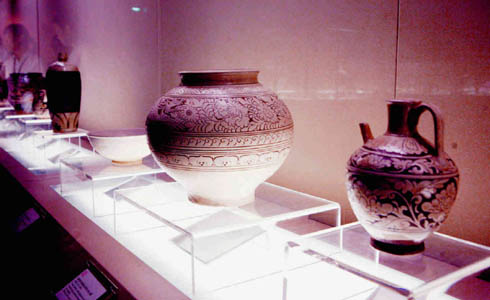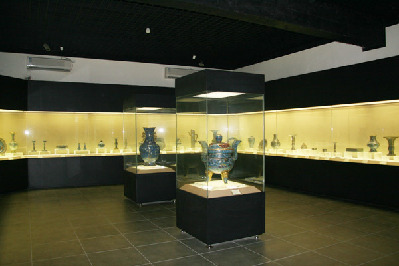My Visit to Guanfu Museum:China's First Private, Non-profit Museum

Cultural Reilics exhibited at Guanfu Museum
A typical room resembling Qing dynasty decorated with mahogany furniture. Since Qianlong and Jiaqing period of Qing dynasty, the mahogany furniture has appeared on the stage of noble furniture and become the leading role.
Established as the first private, non-profit museum in China, Guanfu Museum has been known as a home of cultural relics collection over the past 12 years. People are fascinated not only by over one thousand extraordinary pieces of art, mainly made in the late Ming and Qing dynasties, but also by its founder Ma Weidu, a well-known antique collector.
I was so excited to have an opportunity to visit this legendary antique world.
Approaching the site of the museum, I was a little bit disappointed by the rows of flat shabby houses in Beijing's eastern suburb of Zhangwanfen, but quickly refreshed by the setting of the building - It's new, draws heavily on Chinese architectural influences and has turned the sleepy district into another tourist attraction.
The museum is one that well combines art appreciation and historical studies. Yao Fang, business supervisor of the museum showed us around the entire building, giving a lecture on the exhibits as well as the fascinating ancient Chinese culture.
The building of Guanfu Museum covers an area of 3000 square meters, and is divided into seven departments, namely ancient porcelain, classic Chinese furniture, works of art, oil paintings, classic doors and windows.
Works of Art department. The permanent exhibition is on cloisonne, enamel wares, golden or bronze figural, bronze, lacquer, jade, classical furniture and hand stone inlaid wares from the Song to Qing dynasty.
The transcendent sound of ancient musical instruments and comfortable carefree illustration of Mr. Yao take me back into the ancient times. The exhibition on Chinese porcelain includes about 140 elegant pieces from 10th to 18th century (Tang to Qing dynasty). Each one is a masterpiece that combines artisan intelligence and hard-work, while the porcelain vase with floral panels made in Qianlong era of the Qing dynasty attracts much attention.




